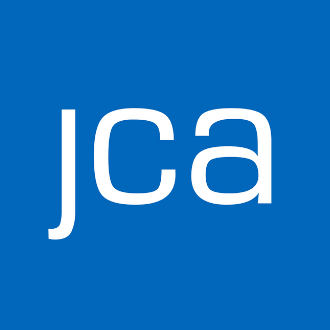Work Smarter: 6 Tips to Effectively Crowdsource Your Documentation

Liz Murray
Director of Professional Services
As much of the nonprofit workforce continues to work remotely, documenting your organization’s policies and procedures will be the cornerstone to operational success. Documentation supports key activities including process control and refinement, data management, reporting, onboarding, and compliance. Finding the time to document your work can be tricky—it often gets lost in the everyday shuffle or deprioritized in place of higher profile activities. Within the organization, documentation may have many informal owners, making it difficult to develop and control a holistic framework. How can you make improvements to this essential (yet often forgotten) area? The following tips are designed to help you crowdsource your documentation and leverage technology, process, and people to build an effective framework.
TECHNOLOGY
1. Centralize documentation (ideally in a web-based solution)
The first step is to centralize documentation in a single place. Gather documentation from each functional area to create a library. As new content is added, your organizational knowledgebase grows and cross-team transparency improves. By investing in a centralized web-based wiki or intranet solution, you can make crowdsourcing content both efficient and effective (which in turn will improve adoption). Consider what software you may already have available for this purpose. For example, Office 365 typically includes SharePoint.
An intranet solution provides functionality to help streamline the process, such as:
- Formatting and other content creation tools
- Creating reusable templates
- Concurrent editing for multiple users
- Linking of content across sections
- Sharing user content via links
- Tracking revision history
Staff need the ability to easily search and retrieve documentation based on keywords or a thoughtfully designed classification system. Using your organizational chart to inform classification is a good template, as it allows teams to store their content in one section and is intuitive to learn, as staff are already familiar with the structure. Below the functional level, consider process-based groupings to align documentation with the work (i.e. Batch Entry, Adjustments and Refunds, Receipting). It is useful to include a data dictionary or a business glossary for your CRM that can be referenced by all teams and linked to specific process documentation. That way, you will have one source of truth to reference across the organization and it will be less work to maintain.
2. Provide staff with a screenshot editor
Being able to capture and easily make notes on screenshots is crucial to creating documentation, particularly relating to specific systems. Not only does it make the content more explicit and easier to follow, it saves time for the author. While out-of-the-box tools included with your PC like Snipping Tool can work in a pinch, ideally the screenshot editor would provide additional tools to add shapes and text to the screenshot. Investing in a screenshot editor will streamline the creation process and improve the quality of the documentation (after all, it’s very difficult to draw a straight line using only your mouse!).
Be sure to consider privacy requirements in terms of capturing constituent data in your documentation policy. You may want to use a test record, your own record, or a blurring tool within the editor to mask sensitive information. As a general rule, if it’s difficult to explain, consider using a screenshot.
PROCESS
3. Create templates
Templatizing content is another way to standardize and speed up the documentation creation process. Templates provide an easy-to-populate format to create new content, and can help ensure your documentation is complete. For example, including a section for objectives encourages staff to consistently record contextual information about the process.
Templates provide a standard structure and process and facilitate the creation of new documentation. Within your template, consider leveraging numbered lists and tables. It is faster to write lists than crafting text blocks and a good fit for procedural documentation (indicating sequence). Tables provide an excellent format for collecting and organizing related data, and is easy for the end user to make sense of the information. Lists and tables are also a great way to improve adoption by appealing to people who don’t see themselves as writers.
4. Document as you go
Instead of viewing documentation as a standalone chore to be done at the end, consider the art of documenting as you go. Think about documentation as you establish new procedures and leverage it to help drive decision making. Meeting notes and email content are good sources for draft documentation. By documenting during meetings, you can become more efficient in leading decision making and managing outcomes. On average, our short term memory can only hold 7 items at once. Using visual or written aids in meetings can help overcome this challenge, especially for your most complex processes. Writing it down also helps to keep momentum between meetings for larger decisions that require several conversations.
To get started, you can prep for meetings by preparing draft documentation to organize your thoughts and ultimately guide the discussion. Same goes with email communications—take the time to clearly articulate the issue, as this will help the recipient better understand the information and it will form the base of your documentation. If you are into process modeling, develop a draft model and update on the fly (it doesn’t have to be perfect!). Once you have finalized the decision, update the content to create your final documentation. Don’t forget to circulate the final version, to communicate any changes and to confirm that you have accurately captured the content.
PEOPLE
5. Assign functional leads
Assigning a person to represent their functional team provides accountability in the process. Maintaining documentation is crucial to a successful framework, as people need to be able to trust the resource. The functional lead structure should align with the classification system in place (remember that organizational chart-based classification?). The person does not have to write all the documentation for their team, but rather provide oversight to ensure that documentation is being created and used. If your organization is interested in creating an oversight group to help align data policies across teams (i.e. a Data Governance Committee), the functional leads provide a natural structure. Just remember that you will want the team to have an official chair to help prioritize and make decisions.
6. Champion the initiative
Documentation is not glamorous and can be easily overlooked. Assign a champion (or multiple champions!) to promote and recognize this initiative. Ideally, at least one of your champions will be part of the senior leadership team. If you are coming from a culture of no documentation, this transition will require greater attention to change management. It may seem overly time-consuming and cumbersome for staff at the beginning, especially if you have to play catch-up. To mitigate this risk, consider assigning a project manager to oversee the initial push and stabilization. Think about ways to make this exercise fun and celebrate milestones.
By leveraging these tips, you will be well on your way to effectively crowdsourcing your documentation and creating an essential information resource for your organization.
REALIZE YOUR GOALS
JCA bridges the technological gap between your goals and your processes. When they’re connected, you work smarter and move closer to achieving your mission. Backed by three decades of technological and operational excellence, we streamline your processes AND increase member participation and engagement. Contact us to bring your goals into reach.
Industry Insights, Delivered Directly to your Inbox
Sign up for our monthly newsletter to receive the latest tips from our consultants on fundraising best practices, optimizing your technology, and more.
